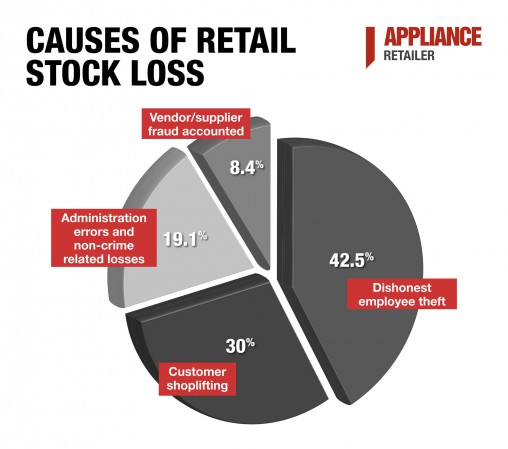Shoplifting is costing retailers in Australia $2.8 billion annually, and dishonest employees are worse offenders than customers, according to the Smart Cube’s Global Retail Theft Barometer 2013-2014, published by Checkpoint Systems.
The main cause of stock loss, or ‘retail shrinkage’, is dishonest employees, which account for 42.5 per cent of lost stock ($1177 million), closely followed by shoplifting customers at 30 per cent ($831 million). Administration errors and non-crime related losses accounted for 19.1 per cent ($529 million) and vendor/supplier fraud accounted for 8.4 per cent ($233 million).

According to the report, these figures mean that consumers end up paying a $192 ‘honesty tax’ per year; which represents an increase in prices in order to compensate for retail loss.
The report found that 18 to 30 year olds were the worst offenders, accounting for 42 per cent of shoplifting. The most common items stolen are small and of high value, for example fashion accessories, batteries, mobile phone accessories, wines and spirits and, perfumes and fragrances.
Loss prevention techniques
Loss prevention techniques include security tags, radio-frequency article surveillance equipment and staff training.
Radio Frequency Identification technology (RFID) allows managers to monitor inventory automatically through a unique code. This automates the tracking of items from distribution centres to the stores, avoiding any possible packing mistakes in quantity, model, size or colour.
“RFID technology means that a retailer can also better manage inventories with detailed information of what has been stolen including the value of the merchandise. This allows for improved ordering so the shoppers have the merchandise they came in to buy available on the shelf when they want it,” explains Mark Gentle, managing director Checkpoint Systems Australia and New Zealand and vice president of Asia Pacific.
“There’s not just one silver bullet for preventing theft. Retailers need to have the right systems, procedures and technology in place, in order to effectively reduce shrinkage,” Gentle said.
Related: Six tips to stop stock loss and theft in a retail store

